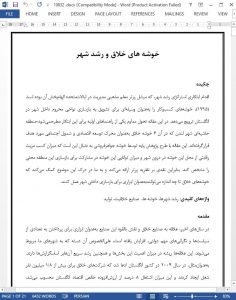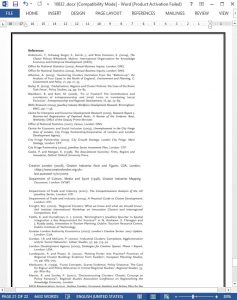Abstract
Inspired by US management guru Michael Porter (1995) the City Growth Strategy initiative is promoting business clusters as a means of encouraging the regeneration of deprived inner city areas in the UK. This paper draws on an ongoing evaluation of one of the initial pilots for this initiative – the City Fringe area of London where six creative clusters are being targeted as a means of stimulating local economic development and social inclusion. Drawing on baseline research with the jewellery cluster the paper explores the degree to which this cluster gains competitive advantage from its inner city location and the extent to which it is able to contribute to the regeneration of the local area. It thus provides a critique of Porter’s theory and contributes to our understanding of the extent to which creative clusters can act as a tool for inner city regeneration.
Introduction
In recent years there has been a growing interest in the creative industries and their potential role as a tool for addressing a number of key government policies and concerns, particularly those concerned with our towns and cities. This interest stems from the significant size of the sector as well as the rapid growth it has reportedly experienced. In the UK in 2004, for example, it is claimed that creative companies provided employment for over 1.8 million people and accounted for 8 per cent of Gross Value Added of the UK economy, while between 1997 and 2002 they grew at an average of 6 per cent per annum compared to 3 per cent for the whole economy (Creative London 2006). This growth appears to be particularly significant within cities, often two to three times the national proportion (LDA 2005).
Conclusions
This case study raises a number of issues that question the value of the cluster concept as a tool for understanding how firms gain competitive advantage. The experience of the jewellery cluster in the City Fringe suggests that clustering can provide some competitive advantages to some firms, particularly where production requires the input of a range of different skills and where the close proximity of businesses offering these skills facilitates the efficiency of the production process. But for other businesses different considerations, such as the cost of supplies, are more important than geographical proximity, and their supply chain networks extend well beyond the local area as a result. This emphasizes the importance of understanding the different subgroups within a cluster when developing a strategy for support. It also suggests that cluster boundaries are difficult to define and are unlikely to coincide neatly with a given regeneration area. This has significant implications for the management of cluster initiatives.











